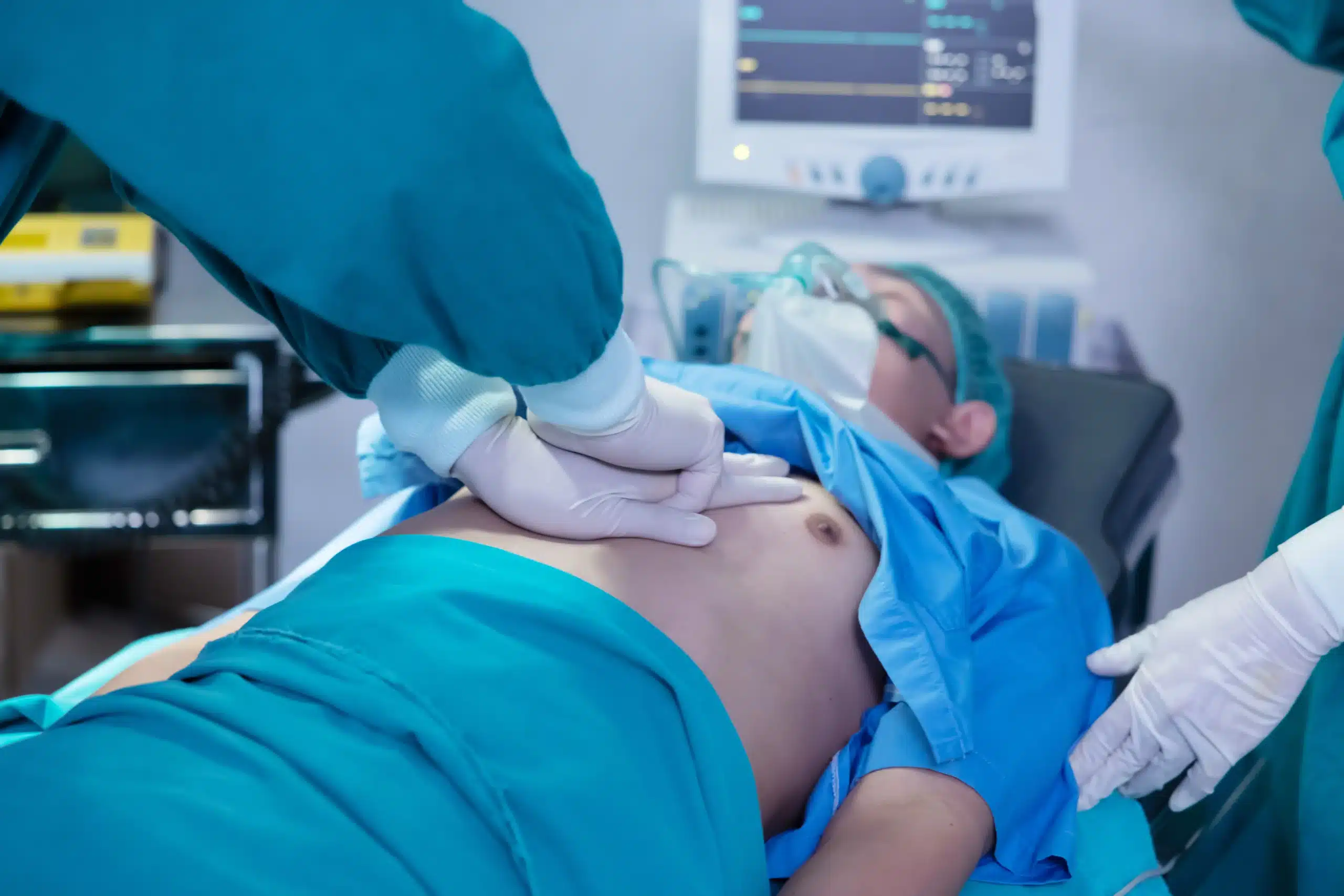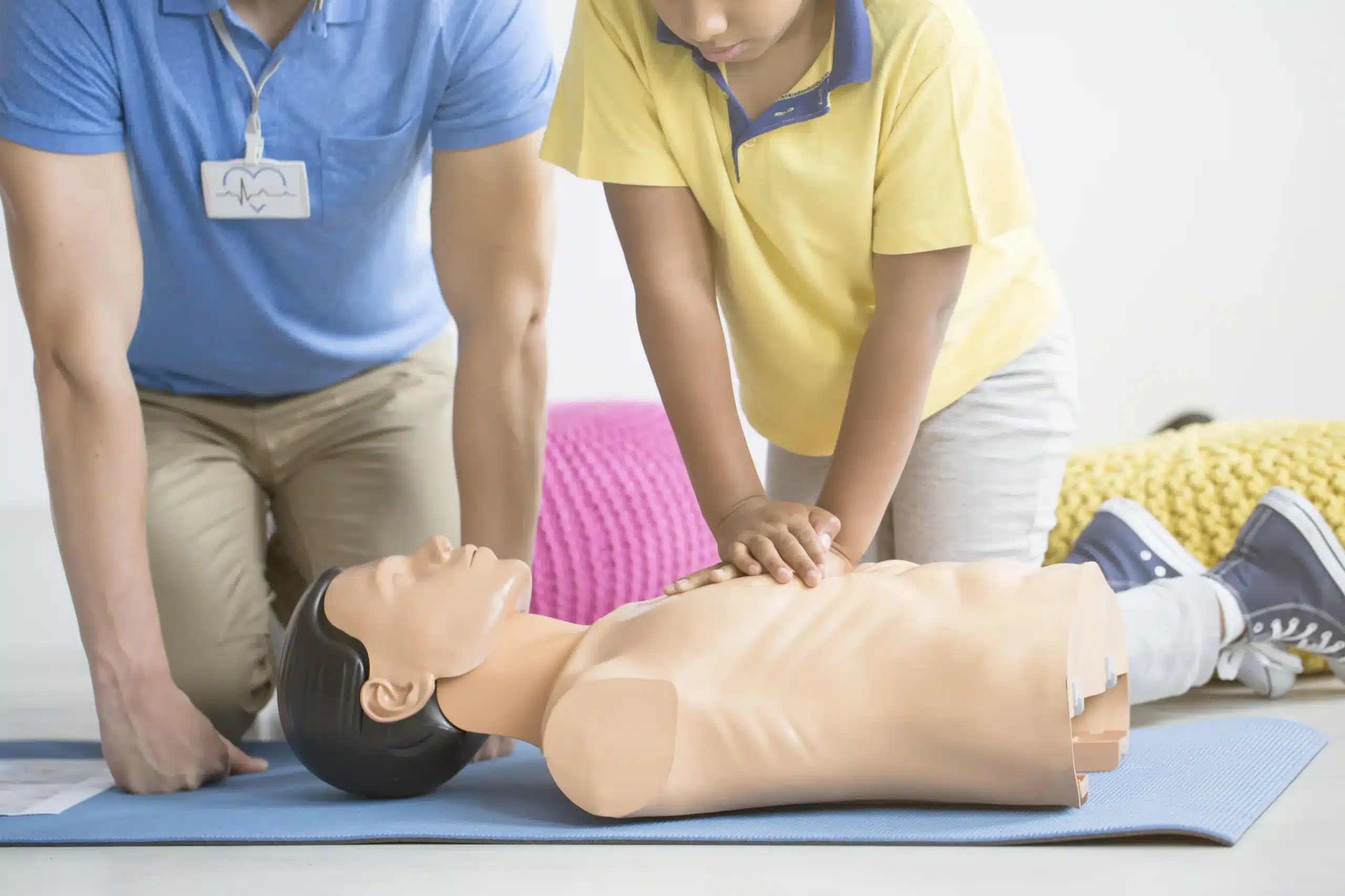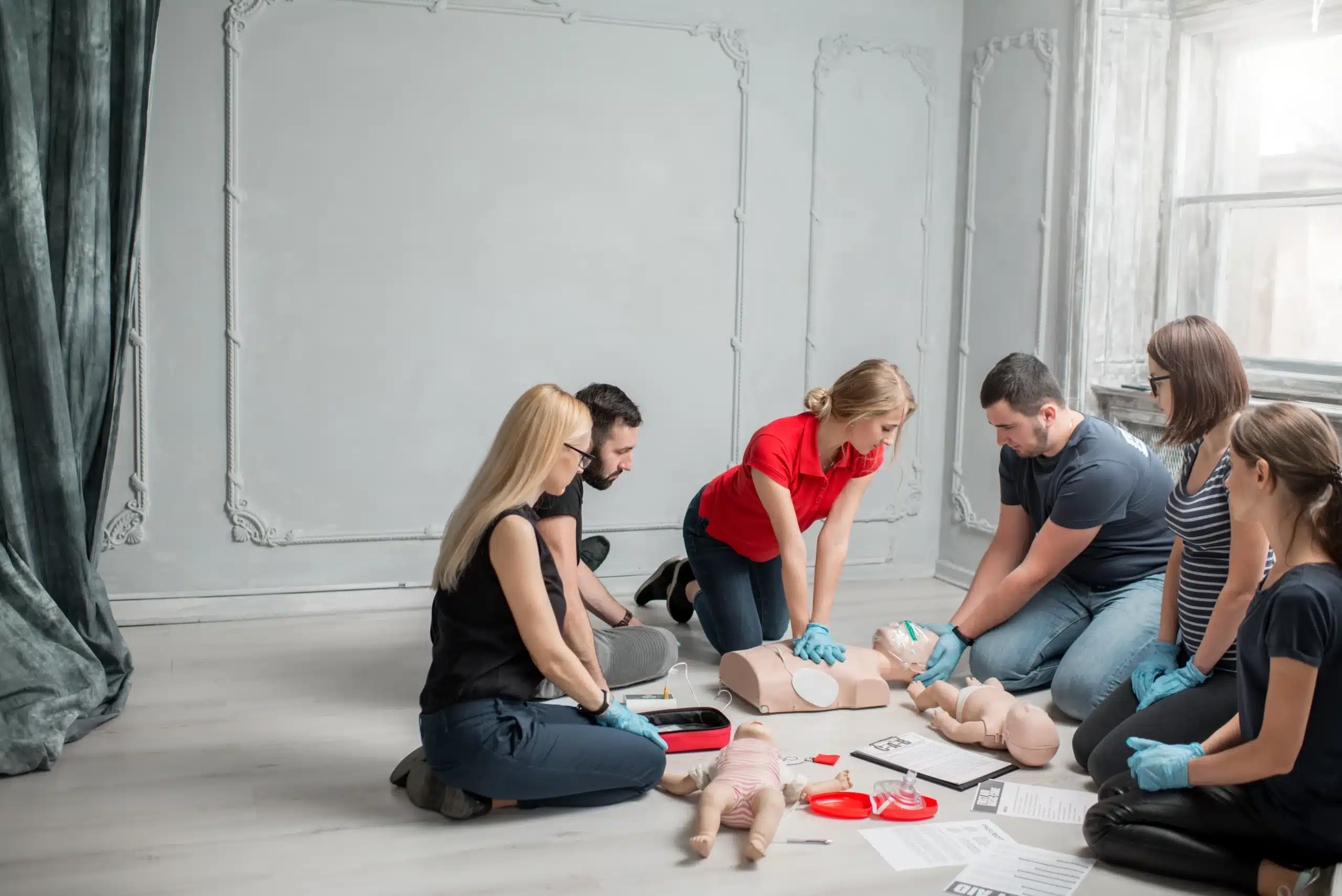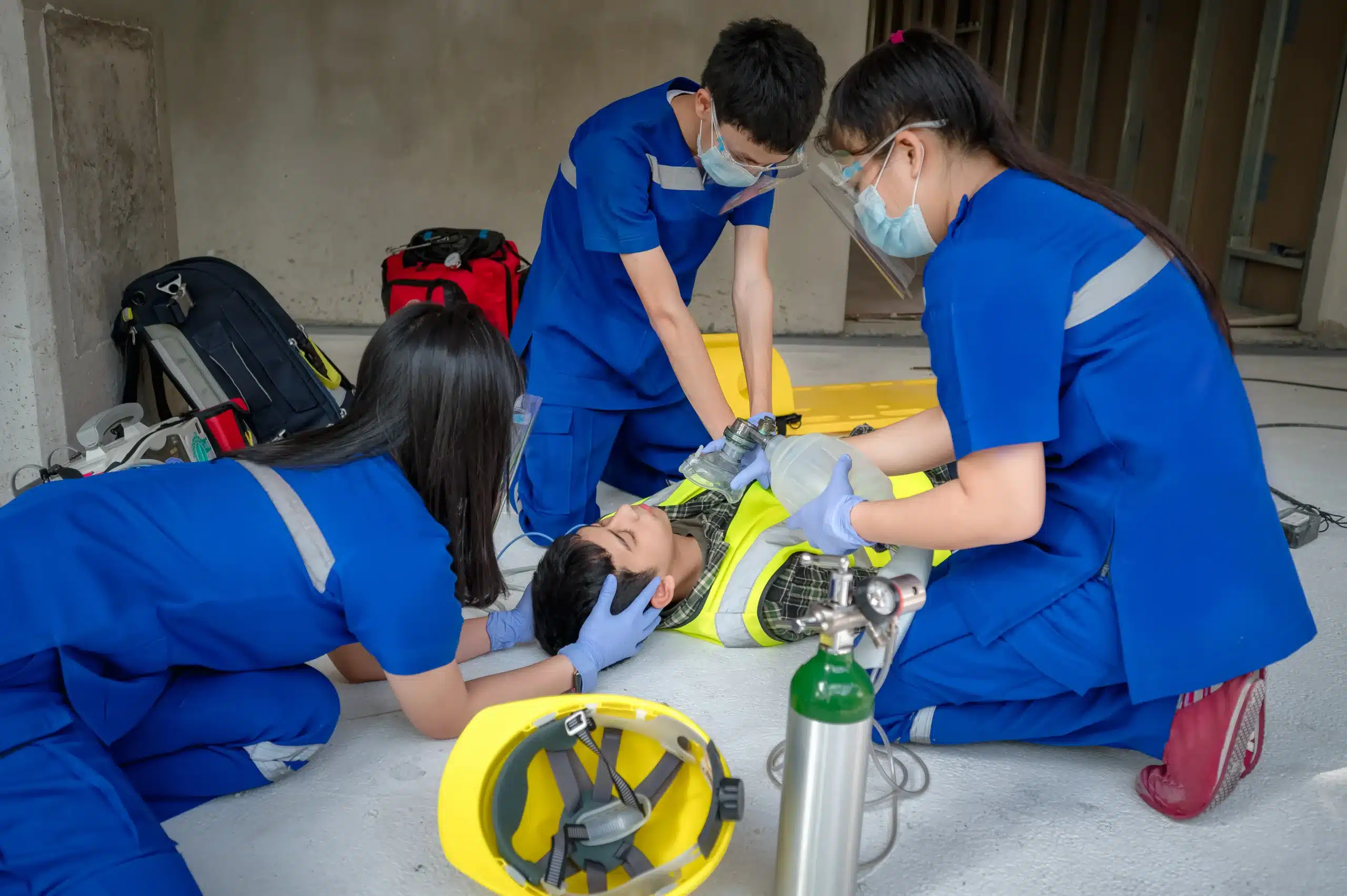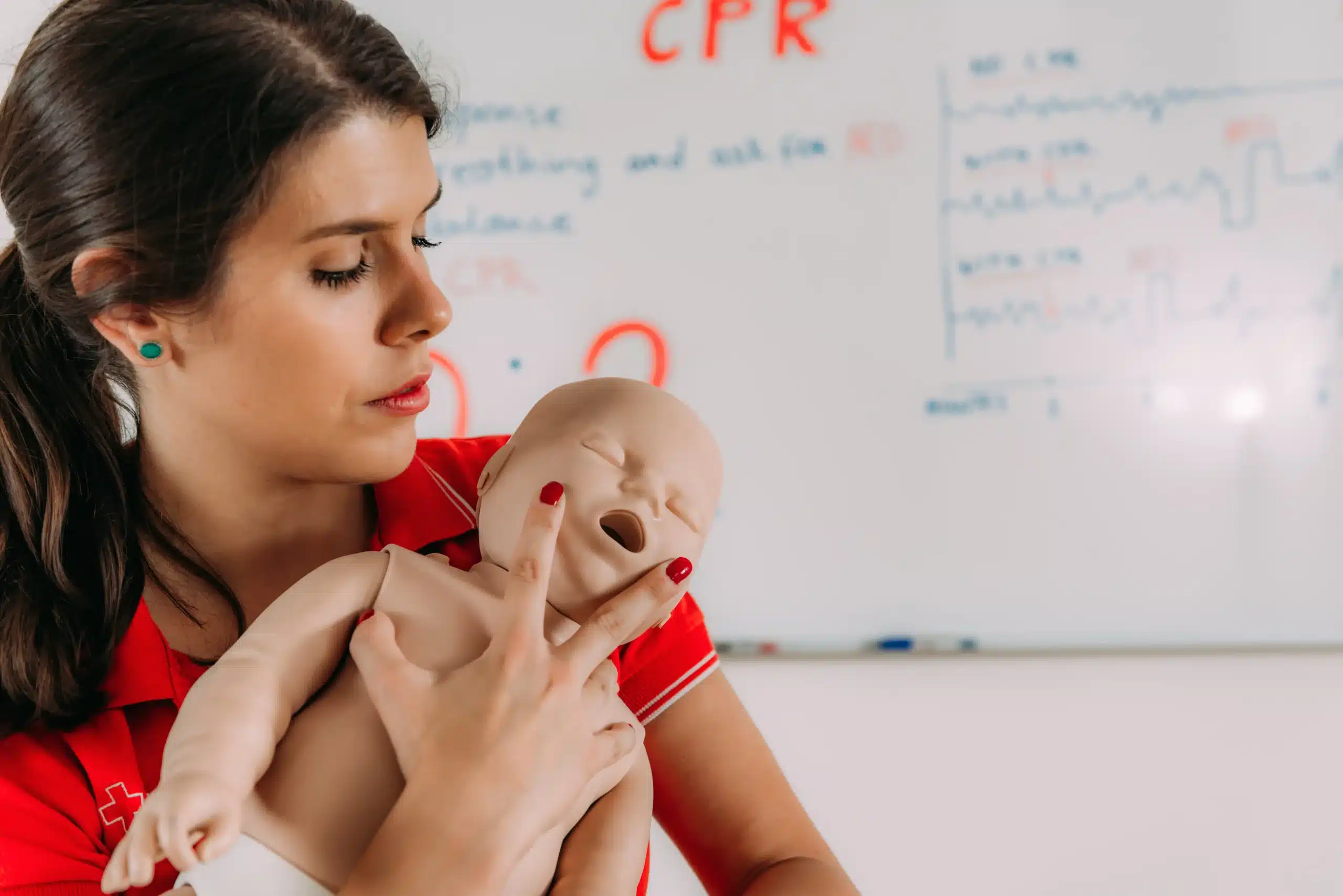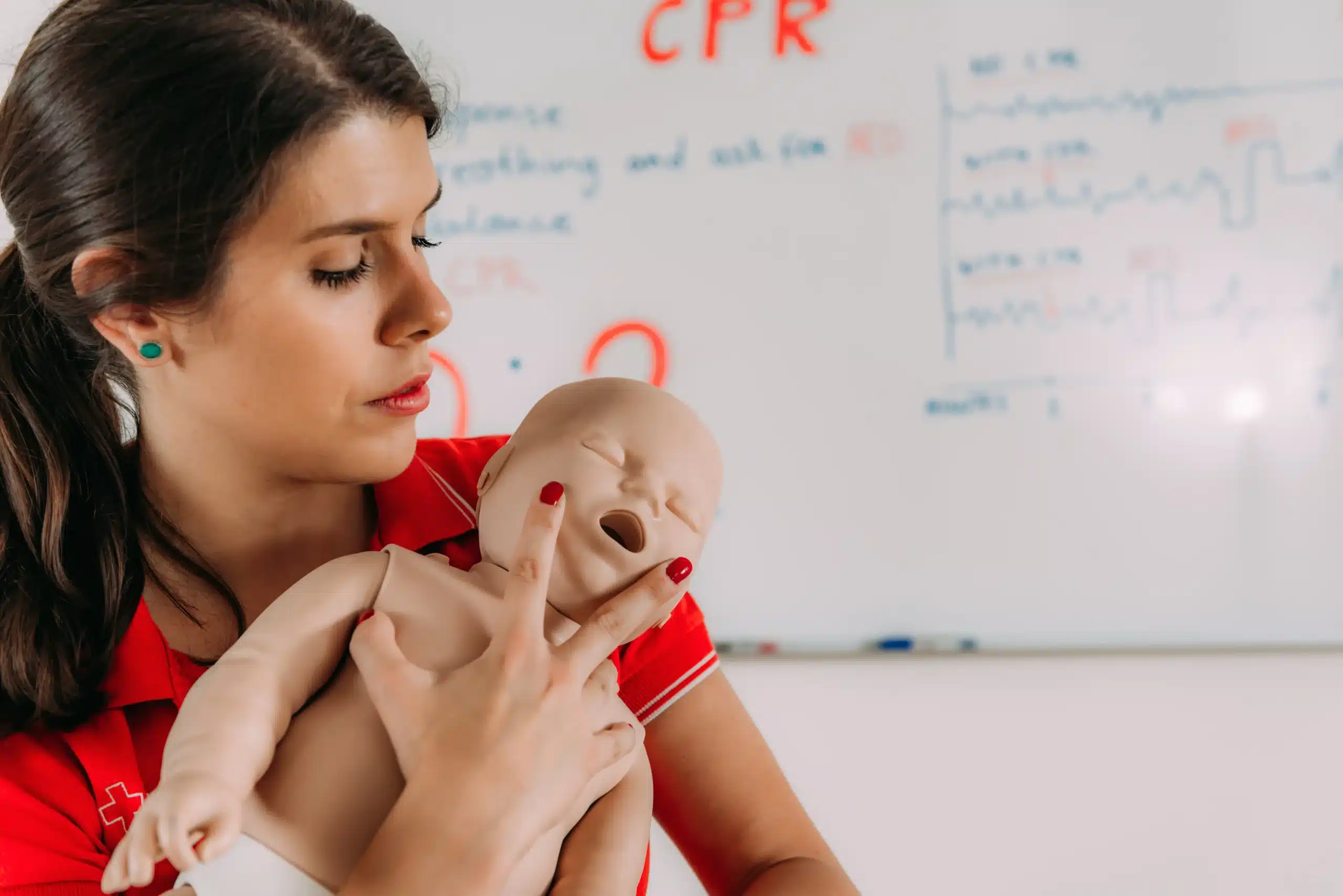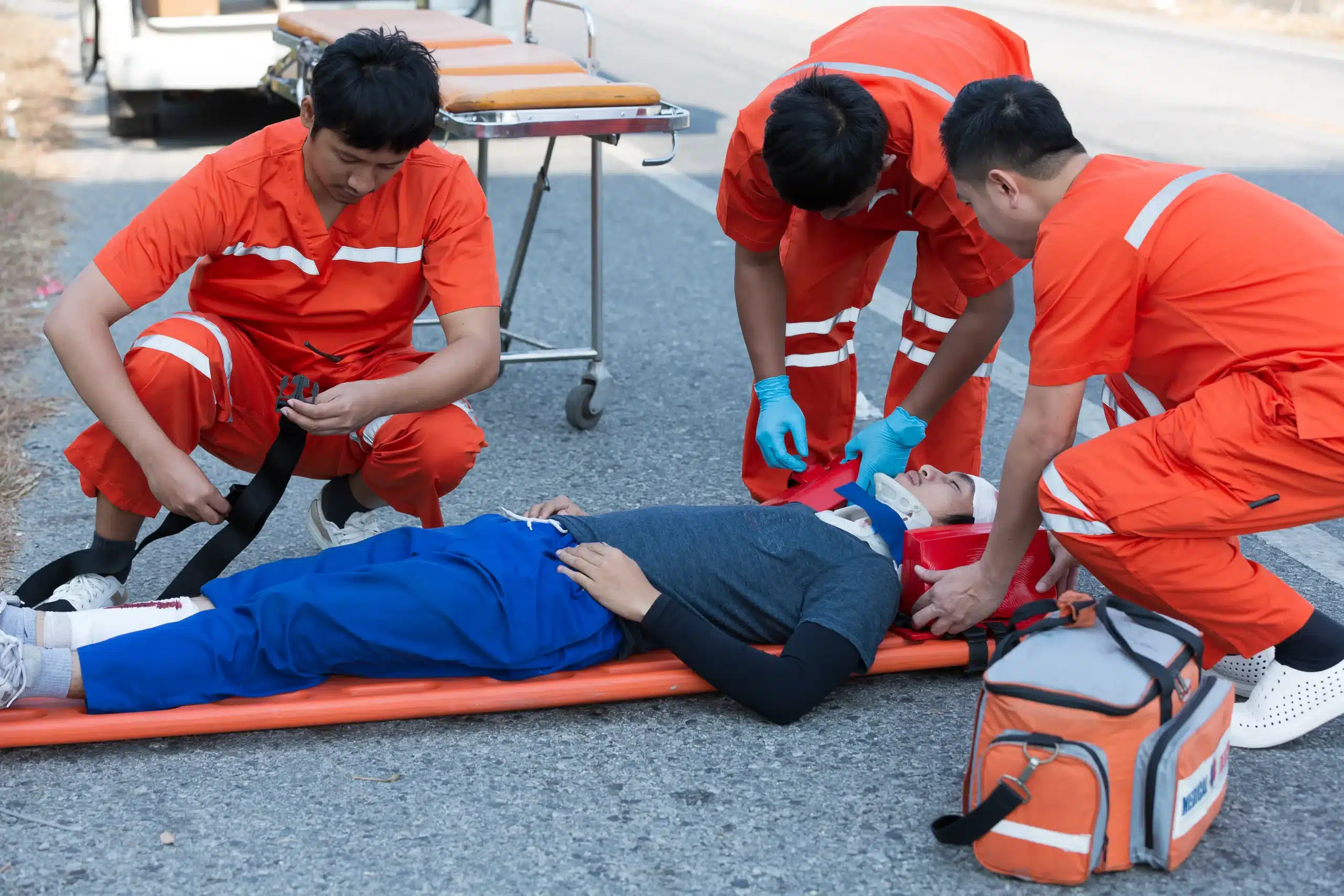Emergencies can happen anytime, anywhere. Are you prepared to respond? This guide is your go-to resource for finding CPR training in Rancho Cordova. We’ll cover everything from the basics of CPR to more advanced certifications like BLS, ACLS, and PALS. Whether you’re a healthcare worker, a parent, or simply want to learn a valuable life skill, we’ll help you find the right training program. We’ll discuss the importance of choosing an accredited provider, the benefits of hands-on training, and what to expect in a CPR class. We’ll also debunk common CPR myths and provide practical tips for choosing the right course and scheduling your training. Get ready to gain the confidence and skills to make a real difference in a critical situation.
Key Takeaways
- Find the right CPR class for you: Rancho Cordova offers various CPR and first-aid training options, from basic community courses to advanced professional certifications. Explore local providers like Safety Training Seminars and NorCal Emergency Medical Training to find a course that fits your needs and schedule.
- Become confident in responding to emergencies: CPR training equips you with essential skills, including performing chest compressions, using an AED, and providing basic first aid. These skills empower you to act quickly and effectively in a crisis.
- Invest in life-saving skills: Learning CPR and first aid is an investment in yourself, your community, and the well-being of those around you. Whether for personal enrichment or professional requirements, CPR certification provides valuable skills that can make a real difference.
What is CPR Training in Rancho Cordova?
CPR training in Rancho Cordova gives you the skills to respond to medical emergencies. These courses teach the basics of cardiopulmonary resuscitation (CPR) and how to use an automated external defibrillator (AED). Many courses also include first aid training. Whether you’re a healthcare provider, work with children, or simply want to be prepared, CPR training empowers you to help someone in need. Several organizations offer comprehensive CPR training in Rancho Cordova, including Safety Training Seminars, making it easy to find a class that fits your schedule. These courses cover essential techniques like chest compressions, rescue breaths, and recognizing the signs of a heart attack or stroke. With the right training, you can make a real difference.
CPR Course Types
Choosing the right CPR course is the first step. Let’s break down the most common types offered in Rancho Cordova.
Basic Life Support (BLS)
BLS certification is the cornerstone for healthcare providers and other professionals who may need to respond to cardiovascular emergencies. This course covers core skills like CPR, recognizing life-threatening emergencies, and using an AED. It’s essential for anyone working in a healthcare setting, from doctors and nurses to EMTs and other first responders. The American Heart Association provides the curriculum for this important training.
Advanced Cardiovascular Life Support (ACLS)
For medical professionals who encounter more complex cardiovascular emergencies, ACLS certification goes beyond the basics of BLS. This training delves into advanced airway management, pharmacology, and team dynamics during resuscitation. It’s a crucial credential for physicians, nurses, paramedics, and other healthcare providers in critical care settings. NorCal Emergency Medical Training offers ACLS courses in the Rancho Cordova area.
Pediatric Advanced Life Support (PALS)
When a child’s life is on the line, specialized training is paramount. The PALS course equips healthcare providers with the knowledge and skills to respond to emergencies involving infants and children. From respiratory distress to cardiac arrest, PALS covers the unique physiological differences in pediatric patients, ensuring the best possible care during critical moments. This training is also offered through NorCal Emergency Medical Training.
First Aid/CPR Combo Courses
Even if you’re not a healthcare professional, knowing CPR and first aid can make a world of difference. Combination courses offer the convenience of learning both skill sets simultaneously. These classes empower individuals to respond confidently to a range of emergencies, from minor injuries to life-threatening situations. They’re a great option for parents, teachers, coaches, and anyone who wants to be prepared for the unexpected. NorCal Emergency Medical Training offers these combined courses locally.
Top Rancho Cordova CPR Training Providers
Finding the right CPR training can feel overwhelming, so we’ve compiled a list of reputable providers in and around Rancho Cordova. Whether you’re a healthcare professional maintaining your certifications or a parent wanting to learn life-saving skills, there’s a course out there for you.
Safety Training Seminars (Carmichael CPR Classes)
Located nearby in Carmichael, Safety Training Seminars offers a convenient option for Rancho Cordova residents. As a woman-owned American Heart Association (AHA) Training Center, they provide high-quality BLS, ACLS, PALS, CPR, and First Aid certification courses. Their commitment to daily classes and a low price guarantee makes them an accessible choice. They also offer specialized courses like the EMSA Child Care Health & Safety program. Their proximity to Rancho Cordova, combined with flexible scheduling, makes getting certified easy.
NorCal Emergency Medical Training
NorCal Emergency Medical Training is an American Heart Association Authorized Training Center in the Greater Sacramento area. They offer a range of CPR and medical training classes in both Rancho Cordova and Roseville. This makes them a solid option for those seeking recognized and reliable certification close to home.
Pro CPR
With a focus on both healthcare professionals and the general public, Pro CPR offers CPR, BLS, AED, and First Aid training right in Rancho Cordova. Their programs aim to equip participants with the confidence and skills to respond effectively in emergencies.
American Red Cross
The American Red Cross is a nationally recognized organization offering CPR training and certification. While their website may not always list specific Rancho Cordova classes, it’s worth checking their site or contacting them directly to find current local offerings. They are a trusted resource for CPR training nationwide.
What Happens in a CPR Class?
CPR classes blend theory with hands-on practice to prepare you for real-world emergencies. Here’s a glimpse of what you can expect:
Hands-on Mannequin Practice
In a CPR class, you’ll work with training mannequins. These lifelike tools allow you to practice chest compressions and get a feel for the correct depth and rhythm. Hands-on learning builds your muscle memory and confidence. You’ll learn exactly where and how hard you need to press to provide effective chest compressions.
Theory and Scenarios
CPR instructors explain the science behind the techniques. You’ll also discuss various emergency scenarios and learn how to assess a situation and respond appropriately. Understanding the theory behind CPR helps you adapt to different situations and dispel common misconceptions.
AED Use
Automated External Defibrillators (AEDs) are lifesaving devices found in many public places. Your CPR class will cover how and when to use an AED. You’ll learn to recognize the signs of cardiac arrest and practice using a training AED on a mannequin. Studies show that effective bystander CPR can significantly improve survival rates. Knowing how to use an AED can make a critical difference.
Certification
Upon successful completion of the course, you’ll receive an official American Heart Association certification card, valid for two years. This certification demonstrates your CPR proficiency and allows you to provide assistance in emergencies.
Costs & Scheduling
Finding the right CPR class often involves balancing cost and convenience. Let’s break down what you can expect regarding pricing and scheduling for CPR training in Rancho Cordova.
Average Course Prices
CPR course costs in Rancho Cordova vary depending on the type of certification you need. Basic CPR and First Aid classes typically start around $75, while more advanced courses like BLS for Healthcare Providers can range from $90-$120. Check with specific providers like Safety Training Seminars for their latest pricing. Many training centers offer package deals, combining CPR and First Aid certification, which can sometimes save you money.
Discounts & Promotions
Keep an eye out for discounts! Many CPR training providers offer promotions for groups, students, or returning customers. Safety Training Seminars offers a low price guarantee, ensuring you get the best value for your training. Referrals are another great way to potentially save – some providers offer discounts if you refer a friend.
On-Site Training
For larger groups or businesses, on-site training can be a huge plus. Providers like Pro CPR will come to your location, minimizing disruption and making it easier for everyone to participate. This option is particularly convenient for workplaces looking to certify multiple employees at once.
Flexible Class Schedules
Juggling work, family, and other commitments can make scheduling a challenge. Thankfully, many CPR training centers in Rancho Cordova offer flexible class schedules. NorCal CPR provides various class times to accommodate busy schedules. Weekend and evening classes are often available, making it easier to fit this important training into your life.
Instructor Qualifications & Accreditation
Knowing your instructor’s background can give you confidence in your training. Here’s what to look for in a CPR instructor’s qualifications and program accreditation.
American Heart Association Certification
The American Heart Association (AHA) sets the standard for CPR and ECC guidelines. Choosing a program with AHA-certified instructors ensures your training aligns with these widely accepted practices. Safety Training Seminars offers AHA-compliant CPR and first-aid training, equipping you with the most up-to-date knowledge and techniques. This is especially important for healthcare providers who need to maintain their certifications. Look for training centers authorized by the AHA, like NorCal Emergency Medical Training, which serves the greater Sacramento area.
EMS Experience
Real-world experience is invaluable. Instructors with Emergency Medical Services (EMS) backgrounds bring practical insights to the classroom, enriching your training and preparing you to respond effectively under pressure. They can offer firsthand knowledge of emergency situations, giving you a more comprehensive understanding of CPR and bridging the gap between textbook knowledge and practical application.
Course Accreditation Standards
Course accreditation ensures your training meets established quality standards. Look for programs certified by the American Heart Association, like those offered by NorCal CPR. This certification provides assurance that the curriculum, materials, and instructors meet national standards. Policies like a “Don’t Pass, Don’t Pay!” guarantee demonstrate a commitment to student success and quality instruction. Choosing an accredited program validates your training and ensures you receive a recognized certification.
CPR Misconceptions Debunked
It’s easy to get confused about CPR, especially with so much information (and misinformation) circulating. Let’s clear up some common misconceptions so you can feel confident about learning this life-saving skill.
“CPR is Only for Medical Professionals”
Many people believe only doctors and nurses need to know CPR. This simply isn’t true. While healthcare providers frequently use CPR, anyone can learn it. Proper CPR training, like the courses offered at Carmichael CPR Classes, empowers individuals to provide immediate care while waiting for paramedics. This makes it a vital skill for everyone, not just medical professionals. Think about it—wouldn’t you want someone nearby to be able to help if you or a loved one needed it?
“CPR Can Hurt Someone”
Another common myth is that performing CPR might do more harm than good. Some worry about broken ribs or other injuries. In reality, the benefits of performing CPR far outweigh the risks, especially during a life-threatening cardiac event. It’s important to remember that someone who needs CPR is already in a critical situation. Effective CPR can be the difference between life and death. Hesitation based on fear of causing minor injuries can have devastating consequences.
“Mouth-to-Mouth is Always Necessary”
The idea of mouth-to-mouth resuscitation can make some people hesitant to perform CPR. However, current American Heart Association (AHA) guidelines prioritize chest compressions. Hands-only CPR is often sufficient and highly effective. While rescue breaths are sometimes included, compression-only CPR makes it easier for bystanders to step in and help without feeling overwhelmed or unsure.
“CPR Alone Restarts Hearts”
Movies and TV shows often portray CPR as magically bringing someone back to life. This leads to the misconception that CPR alone restarts hearts. In reality, CPR primarily keeps blood and oxygen circulating. It buys crucial time until professional medical help arrives with advanced life-saving equipment. Understanding this is crucial. CPR is a critical first step, but further medical intervention is usually necessary for full resuscitation.
Choose the Right CPR Course
Finding the right CPR course can feel overwhelming with so many options available. But by focusing on your specific needs and doing some research, you can easily find the perfect fit.
Assess Your Needs
Before you start searching for CPR certification courses, take a moment to consider why you want to learn CPR. Are you required to get certified for your job, or are you learning for personal knowledge? Do you need a basic CPR and First Aid course or a more advanced certification like BLS? Understanding your needs will help you narrow down the options. Learning CPR is a valuable skill for anyone, regardless of professional requirements.
Compare Courses
Once you know what type of certification you need, compare different courses. Look at what each course covers. Some may focus solely on CPR, while others include First Aid and AED training. Consider factors like class size, location, and schedule. Safety Training Seminars offers daily classes in over 60 cities and a low price guarantee. Other providers, like NorCal Emergency Medical Training, are American Heart Association Authorized Training Centers. Pro CPR also offers various courses, catering to both healthcare professionals and the general public. Take the time to find a program that aligns with your schedule and learning style.
Read Reviews
Finally, check reviews and testimonials. Hearing from past students can give you valuable insights into the quality of instruction and the overall learning experience. Look for comments about the instructors, the course materials, and the overall atmosphere. By considering these factors, you can choose a CPR course that meets your needs and prepares you to confidently respond to emergencies.
Why CPR Training Matters
Knowing CPR can empower you to make a real difference in a critical situation. From healthcare settings to the family home, the ability to administer CPR and first aid can be invaluable. Let’s explore why CPR training is so important for various groups.
Healthcare Professionals
For healthcare providers like doctors and nurses, CPR training is fundamental. It equips them with the life-saving skills needed to respond to cardiac arrest and other emergencies, both in and out of the hospital. These professionals often face situations where immediate action is crucial, and their CPR training ensures they can deliver effective care. CPR training provides healthcare professionals with the knowledge and practice to perform CPR and other basic cardiovascular life support skills confidently.
Childcare Providers & Educators
Children are naturally curious and prone to unexpected accidents. For those entrusted with their care, like childcare providers, teachers, and camp counselors, CPR and first aid training is paramount. Knowing how to respond to choking, near-drowning incidents, or other childhood emergencies can be life-saving. CPR and AED training gives these professionals the tools to handle emergencies involving children. This training provides the skills and confidence to act quickly and effectively when a child’s safety is at risk.
Workplace Safety
Many workplaces, especially those involving machinery, chemicals, or physically demanding tasks, benefit from having employees trained in CPR. In the event of a workplace accident, a trained colleague can provide immediate assistance, potentially minimizing the severity of injuries. Employers are increasingly recognizing the importance of CPR training for workplace safety. Having trained individuals on-site can significantly improve the outcome of workplace emergencies.
General Public & Families
CPR training isn’t just for professionals; it’s a valuable skill for everyone. Learning CPR empowers individuals to assist family members, friends, or even strangers during a medical crisis. Consider a scenario where a loved one experiences a sudden cardiac arrest at home—knowing CPR can be crucial before professional help arrives. CPR training is designed to be accessible to everyone and can truly make a difference in unexpected emergencies. It provides individuals with the confidence and skills to respond effectively in a crisis, potentially saving a life.
Key CPR Skills & Techniques
This section covers the core skills and techniques you’ll learn in a CPR training course. From chest compressions and AED use to first aid and recognizing emergencies, these skills empower you to respond effectively in critical situations.
High-Quality Chest Compressions
High-quality chest compressions are the cornerstone of effective CPR. They circulate blood to vital organs, keeping the person alive until professional help arrives. In your CPR class, you’ll learn the precise hand placement, depth, and rate of compressions needed for adults, children, and infants. Hands-on practice with a training mannequin helps you develop the muscle memory and confidence to perform compressions effectively under pressure.
Proper AED Use
Automated External Defibrillators (AEDs) are life-saving devices that can restore a normal heart rhythm during sudden cardiac arrest. CPR training includes instruction on how to safely and correctly operate an AED. You’ll learn how to assess the situation, apply the AED pads, and follow the device’s voice prompts. Understanding AED use can dramatically improve the chances of survival in a cardiac emergency. More information on AEDs and their use can be found through resources like CPR Baton Rouge.
First Aid Techniques
Beyond CPR, your training will cover essential first aid techniques. You’ll learn how to manage common injuries like cuts, burns, and sprains, as well as how to respond to medical emergencies such as choking and allergic reactions. Taking a first aid and CPR class provides the knowledge and skills to handle a range of situations, giving you the confidence to assist someone in need.
Recognizing Emergencies
Knowing when to perform CPR is just as important as knowing how. Your training will equip you to recognize the signs of cardiac arrest and other medical emergencies. You’ll learn how to assess a person’s responsiveness, check for breathing and a pulse, and quickly determine the appropriate course of action. Resources like Concord CPR Classes offer further information on recognizing and responding to emergencies. Responding promptly can significantly impact survival rates.
Related Articles
- Advanced Cardiac Life Support in Rancho Cordova: Find Training – Carmichael CPR Classes
- BLS Courses in Rancho Cordova: Your Complete Guide – Carmichael CPR Classes
- AHA PALS Classes in Carmichael, CA – Carmichael CPR Classes
- First Aid Training in Carmichael: A Complete Guide – Carmichael CPR Classes
- CPR & First-aid Classes in Carmichael, CA – Carmichael CPR Classes
Frequently Asked Questions
What’s the difference between BLS and CPR?
CPR is a specific life-saving technique used during cardiac arrest, focusing on chest compressions and rescue breaths (if applicable). BLS (Basic Life Support) is a broader term encompassing CPR but also including other skills like using an AED, relieving choking, and recognizing the signs of a heart attack or stroke. Think of CPR as one tool within the larger BLS toolkit.
How do I choose the right CPR class in Rancho Cordova?
Consider your specific needs. Are you a healthcare professional needing recertification, or are you learning CPR for personal knowledge? Think about your schedule and preferred learning style. Some classes are smaller and more hands-on, while others might be larger. Check out reviews of different training centers like Safety Training Seminars, NorCal Emergency Medical Training, and Pro CPR to see what past students say. Don’t forget to compare costs and look for any available discounts.
I’m nervous about performing CPR. What if I do something wrong?
It’s completely normal to feel a little apprehensive. Remember, the most important thing is to act quickly. CPR training equips you with the knowledge and skills to respond effectively, and hands-on practice during class builds your confidence. Even if you’re not 100% perfect, any attempt at CPR is better than none. You’re providing vital support until professional help arrives.
How often do I need to renew my CPR certification?
CPR certifications are typically valid for two years. Staying current with the latest guidelines is important, as techniques and recommendations can evolve. Many training centers offer refresher courses to help you maintain your skills and renew your certification.
Why should I learn CPR if I’m not a healthcare professional?
Knowing CPR can be life-saving in various situations, not just in hospitals. You could be the first responder to a medical emergency involving a family member, friend, coworker, or even a stranger in a public place. Having CPR training empowers you to act quickly and confidently, providing crucial support until paramedics arrive.


